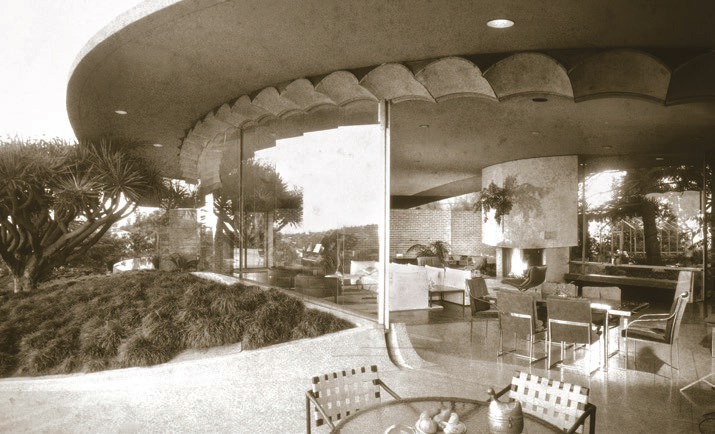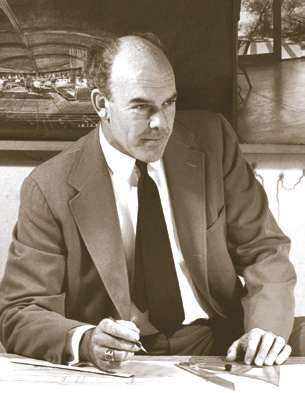8 Great Modern Masters - Page 9
 |
 |
|
|
8. JOHN LAUTNER
Of all the Southern California architects who absorbed the ideas behind 'organic architecture' from Frank Lloyd Wright, few made it as personal as Lautner (1911-1994).
Organic architecture is about blending building with site, sustainability, a sense of magic. It avoids the rigid and is no sense of the word 'square.'
"I love lakes and mountains," Lautner said, "and none of them are square."
Lautner grew up in the woods of Northern Michigan, studied architecture at Wright's Taliesin, and worked with Wright for more than a decade, including in Los Angeles from 1938. Lautner went on his own in 1940.
Although best known in the public mind for his flying-saucer-like Chemosphere House, a flattened octagon on a concrete pier that floats above its site in the Hollywood Hills, Lautner's work is varied in look and material.
He emphasized that the look of his buildings grew out of their functional requirements and the site, and were not based on fantasy. He saw the Chemosphere as sensible for its steep site and considered it a prototype for an entire neighborhood of hillside houses.
Early Lautner houses include many of natural wood, red brick, and glass that open to outdoor living areas. Some houses have entire walls that slide away to open to the out of doors.
The plans of his houses, with rooms arrayed for views, usage, and harmony with the landscape, tend to be complex. In some of his houses Lautner seems to enjoy confusing people about just when it is they are inside the house—or outside.
Lautner enjoyed dramatic interiors and an unexpected interpenetration of rooms with ceilings of differing heights, especially in his homes that step down steep hillsides.
Curves became a major part of his work starting in the late 1950s, with freeform concrete roofs splayed over interior and exterior spaces. Historian Nicholas Olsberg called this expressionist work of Lautner the "poetry of poured concrete."
It's not surprising that one of Lautner's earlier works was the design for Googie's coffee shop that gave the name to that genre of roadside architecture.
Photography: Julius Shulman - © J. Paul Getty Trust. Getty Research Institute, Los Angeles (2004.R.10)
Additional photography: courtesy Rico Tee Archives




